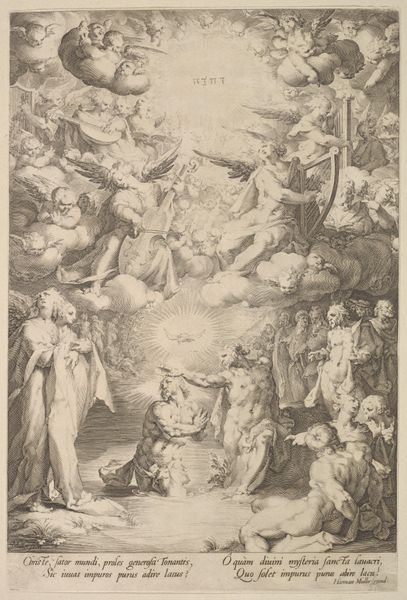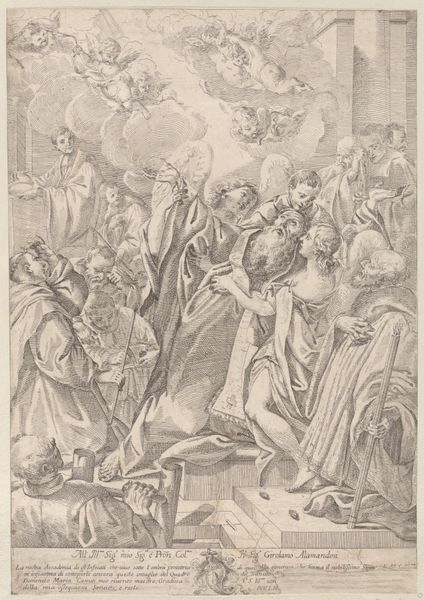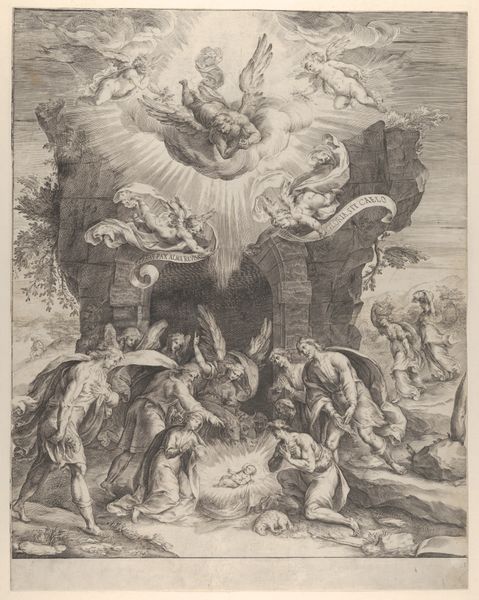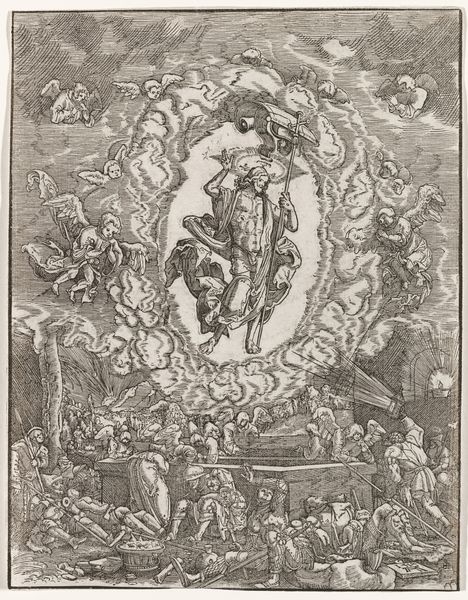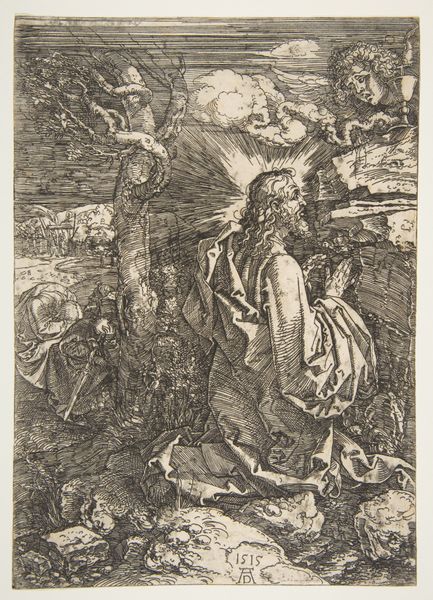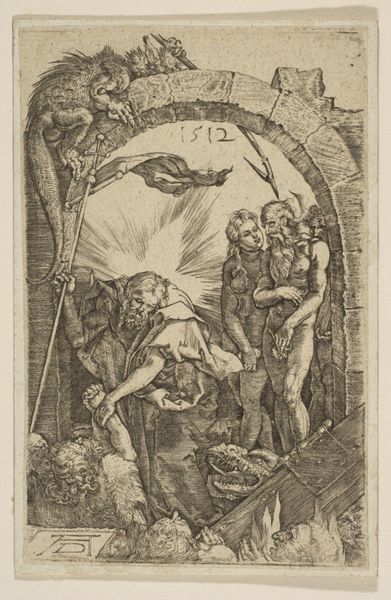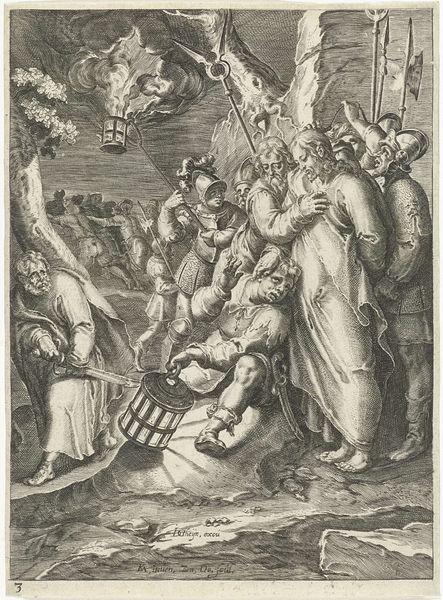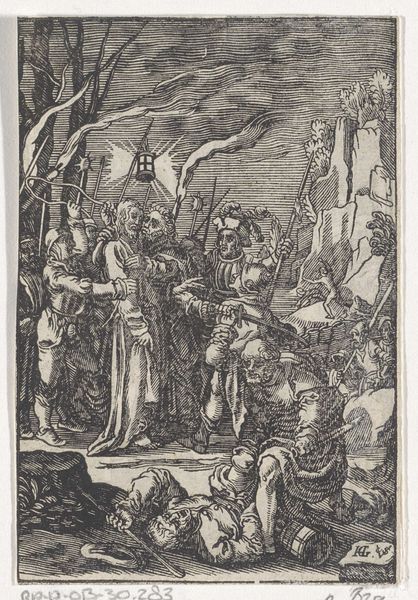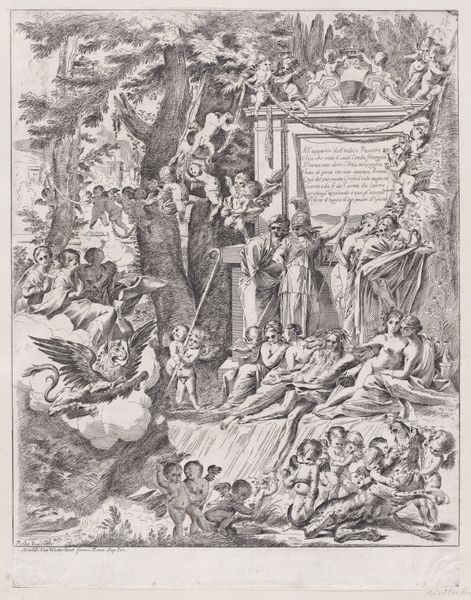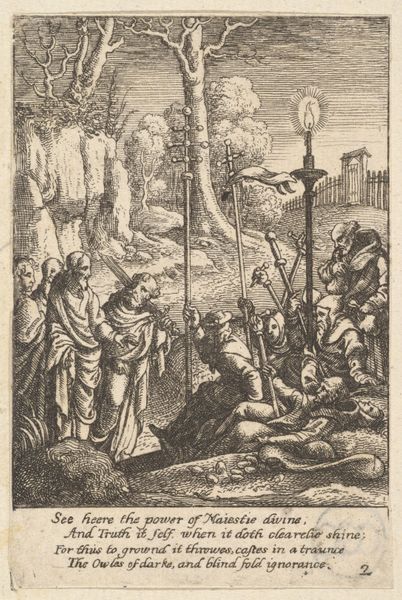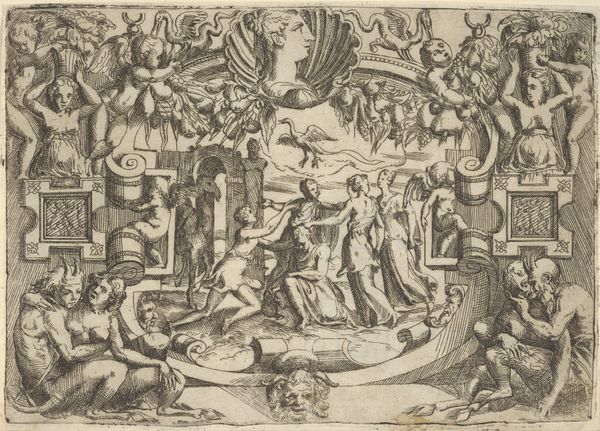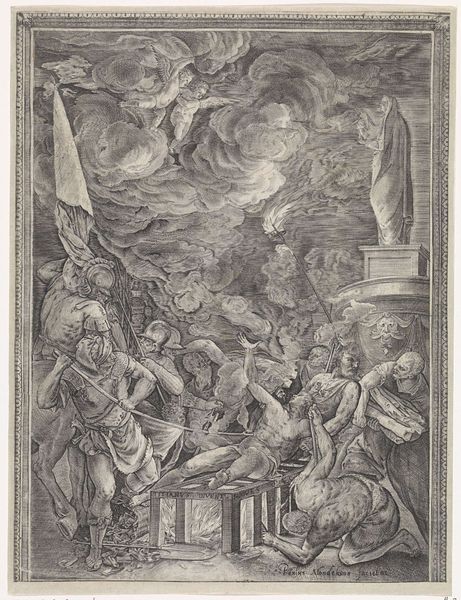
Copyright: National Gallery of Art: CC0 1.0
Gabriel de Saint-Aubin made this etching, "Allegory on the Marriage of the Count of Provence," to commemorate a royal wedding in France. Let's consider how this image creates meaning in its historical moment. In Saint-Aubin's France, marriage wasn't merely a private affair, but a dynastic imperative. The Count of Provence, brother to the king, needed an heir to secure the Bourbon line. With its allegorical figures and classical references, Saint-Aubin's print seeks to elevate this political union to the realm of the gods. It invokes ideas of virtue, stability, and divine blessing upon the couple, and by extension, the monarchy. But Saint-Aubin was also an art critic, acutely aware of the institutions that shaped artistic production. To understand this work more fully, we can turn to archival records, court documents, and contemporary accounts of the wedding festivities. By situating art within its social and institutional context, we gain insights into its intended function and its reception by contemporary audiences.
Comments
No comments
Be the first to comment and join the conversation on the ultimate creative platform.
